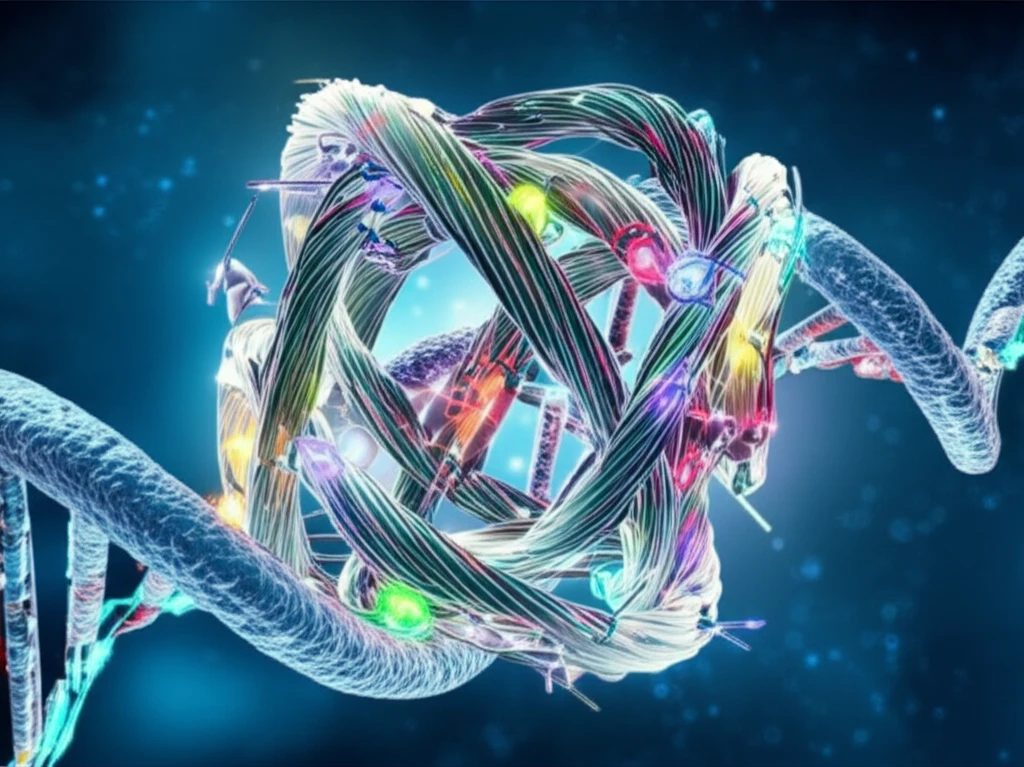
Unlock Gene Therapy's Potential: How Higher-Order siRNAs and Bioconjugates are Revolutionizing Medicine
"Discover the innovative methods in siRNA synthesis and self-assembly that are paving the way for new and improved gene therapies, offering hope for treating cancer and other diseases."
Gene therapy has emerged as a promising frontier in modern medicine, offering the potential to treat diseases at their root cause by manipulating the genetic material of cells. Among the various tools employed in gene therapy, short-interfering RNAs (siRNAs) have garnered significant attention for their ability to regulate gene expression. siRNAs work by targeting specific messenger RNA (mRNA) molecules, preventing them from producing disease-causing proteins. This process, known as RNA interference (RNAi), has the potential to revolutionize the treatment of a wide range of conditions, from cancer to genetic disorders.
Traditional siRNA approaches, however, have faced several challenges, including limited stability, off-target effects, and inefficient delivery to target cells. To overcome these hurdles, researchers have been exploring innovative strategies to enhance the potency and specificity of siRNAs. One such approach involves the synthesis and self-assembly of higher-order siRNA structures. These complex architectures, formed through precise chemical modifications and self-assembly techniques, offer several advantages over conventional siRNAs, including improved stability, enhanced cellular uptake, and the ability to target multiple genes simultaneously.
Another exciting development in the field is the use of siRNA bioconjugates. By attaching various molecules, such as lipids, peptides, or fluorescent dyes, to siRNAs, scientists can further tailor their properties and functionalities. Lipid conjugation, for example, can improve cellular uptake and enhance the siRNA's ability to penetrate cell membranes. Fluorescent labeling, on the other hand, enables real-time tracking of siRNA delivery and distribution within cells, providing valuable insights into their mechanism of action.
What are Higher-Order siRNAs and Bioconjugates?

Higher-order siRNAs are complex structures created through the self-assembly of multiple siRNA molecules. These structures can take on various shapes, such as V-, Y-, and >-< shapes, each designed to perform specific functions. The advantage of these complex structures is their ability to target multiple genes at once, enhancing their therapeutic effect. Think of it like using a multi-tool instead of a single screwdriver—you can accomplish more with one device.
- Improved Stability: Higher-order structures and bioconjugation protect siRNAs from degradation, prolonging their activity.
- Enhanced Cellular Uptake: Modifications like lipid conjugation help siRNAs cross cell membranes more easily.
- Multi-Targeting: Complex siRNA architectures can silence multiple genes simultaneously, addressing diseases with multiple genetic factors.
- Real-Time Tracking: Fluorescent labels enable researchers to monitor siRNA delivery and distribution within cells.
The Future of Gene Therapy
The development of higher-order siRNAs and bioconjugates represents a significant step forward in gene therapy. These advanced techniques offer improved stability, enhanced targeting, and the ability to silence multiple genes simultaneously. As research progresses, we can expect to see these innovative approaches translated into new and more effective treatments for a wide range of diseases, offering hope for personalized medicine and improved patient outcomes.
